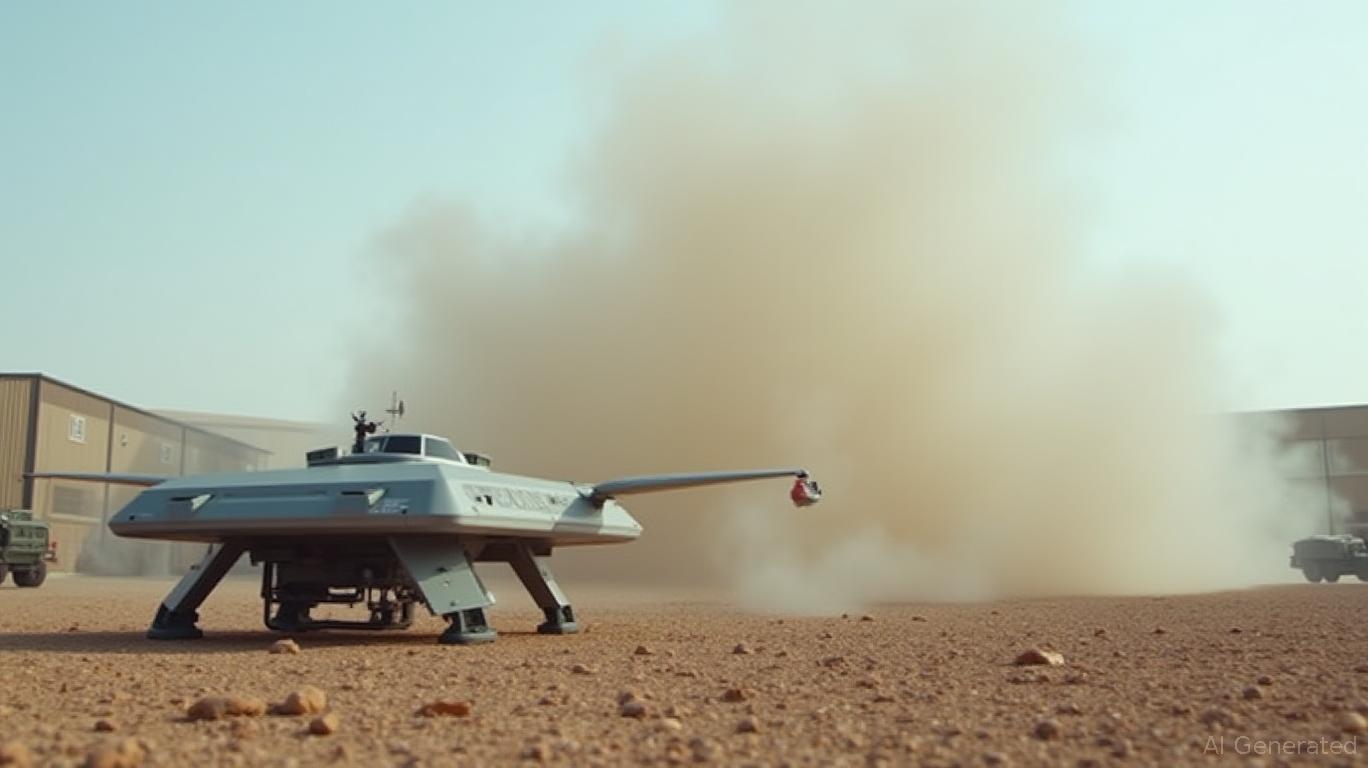OpenAI's Defense Tech Pivot: How AI is Weaponizing the New Cold War
The partnership between OpenAI and Anduril Industries marks a seismic shift in the trajectory of artificial intelligence—from Silicon Valley's innovation labs to the frontlines of global conflict. This strategic
, focused on deploying AI-driven counter-drone systems, is not merely a technical advancement but a clarion call for investors to recognize the fusion of AI innovation, geopolitical rivalry, and defense spending as the next frontier of tech-driven growth. Let's dissect why this pivot represents a golden opportunity for those willing to bet on the militarization of AI—and where to find value in this arms race.
The Geopolitical Catalyst: AI as the New Arms Race
OpenAI's shift into defense tech is no accident. It's a direct response to two converging forces: the escalating China-U.S. tech competition and the urgent need to counter weaponized drones. China's rapid advancements in AI, drones, and autonomous systems have forced the Pentagon to accelerate its adoption of cutting-edge technologies. The $250 million Roadrunner contract—designed to intercept drones carrying explosives—epitomizes this urgency.
The math is stark: global spending on AI-driven defense systems is projected to hit $135 billion by 2030, with counter-drone tech alone accounting for $20 billion annually. reveals a widening gap, as governments pour capital into systems that protect troops, critical infrastructure, and borders. OpenAI's models, now trained on Anduril's battlefield datasets, are the cognitive engines behind this shift.
Scalability: Why Anti-Drone Tech is the New Software-as-a-Service
The partnership's true genius lies in its scalability. Anduril's Lattice software, which integrates surveillance data from air, land, and sea, is the “operating system” for modern defense. Pairing it with OpenAI's generative AI creates a system that learns from each drone threat, refining its responses in real time. This isn't just about hardware—it's a recurring revenue model. Every new drone variant or attack vector becomes a training data point, reinforcing the system's value over time.
Consider the Red Sea, where Houthi drones have targeted oil tankers, or Ukraine, where Russian drones saturate skies: these are not isolated incidents but proof of a global threat. Investors should note that Anduril's contracts are not one-off deals; they're the first tranche of a pipeline. The Pentagon's Replicator program, which fast-tracks AI-driven defense tech, ensures these systems can be deployed in months, not years.
Policy Shifts: The Green Light for Military AI Revenue
OpenAI's pivot also reflects a tectonic shift in corporate ethics. CEO Sam Altman's pivot from avoiding military applications to embracing defense contracts signals a pragmatic acknowledgment: in a world where AI is a strategic weapon, neutrality is impossible. This reversal opens the floodgates for companies to monetize dual-use technologies.
The U.S. government's stance is clear: shows a steady rise, with AI and autonomy now top priorities. Congress is even exploring legislation to streamline AI adoption in the military. For investors, this means companies like Anduril—or their public partners—will enjoy stable, high-margin revenue streams.
Where to Invest: Beyond OpenAI, the Ecosystem is Key
While OpenAI itself is a private behemoth, the public market opportunities lie in its partners and competitors. Anduril's ecosystem includes:
- Palantir (PLTR): The data integration specialist already works with Anduril on Lattice software. Its government contracts are a bellwether for defense AI demand.
- Raytheon Technologies (RTX): Traditional defense giants are pivoting to AI. RTX's integration with AI-driven targeting systems could see it capture a slice of the counter-drone market.
- Booz Allen Hamilton (BAH): A prime contractor for Pentagon AI projects, BAH's consulting work on AI ethics and deployment protocols positions it as a gatekeeper to federal contracts.
Don't overlook Microchip Technology (MCHP) or Analog Devices (ADI): their semiconductor expertise is critical for the sensors and processors powering these systems.
The Risks: Ethical Backlash and Overvaluation
Critics will argue that weaponizing AI risks ethical blowback. Indeed, the EU's proposed AI Act and global scrutiny of military AI could limit adoption. However, in a world where adversaries like China are unburdened by such qualms, the U.S. has little choice but to play defense.
The bigger risk is overvaluation. Companies like Anduril are already valued at $5 billion+ based on their contracts. Public players like PLTR or RTX trade at reasonable multiples, but investors must ensure they're buying future growth, not past glory.
Final Analysis: Bet on the AI-Defense Synergy
The OpenAI-Anduril partnership isn't just about drones—it's a blueprint for how AI will reshape defense spending for decades. Investors who recognize this will profit from three unstoppable trends:
1. Geopolitical arms races will drive relentless demand for AI-driven systems.
2. Scalable, data-driven models will dominate markets where traditional hardware cannot.
3. Policy tailwinds will ensure steady funding for companies that bridge AI and defense.
The time to act is now. While the public markets lack a direct play on Anduril, its partners and enablers offer a path to capitalize on this trend. For the bold, this is the next tech revolution—and the battlefield is where the money will be made.
Investors who ignore this shift risk being left behind. The AI-powered defense era has arrived—and it's time to load your portfolio's artillery.

Comments
No comments yet